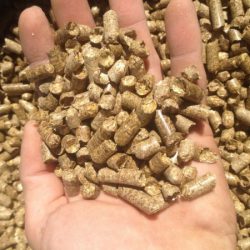Straw pellet plant for sale
Straw Pellet Plant for Sale: A Comprehensive Guide to Biofuel Production

Straw pellet plant for sale. The global demand for sustainable and renewable energy sources is rapidly increasing, leading to a surge in interest in biofuel production. Straw, a readily available agricultural byproduct, presents a viable and economically attractive feedstock for generating clean energy in the form of straw pellets.
This comprehensive guide delves into the intricacies of a straw pellet plant, outlining its components, operational processes, benefits, and potential for investment.
Whether you’re a farmer seeking to diversify income streams, an entrepreneur looking for a green investment opportunity, or a business aiming to reduce its carbon footprint, this guide provides valuable insights into the world of straw pellet production.
What is a Straw Pellet Plant?
A straw pellet plant is a specialized facility designed to convert agricultural straw into high-density, cylindrical pellets. This process involves several stages, including straw collection, pre-processing, drying, grinding, pelleting, and cooling.
The resulting straw pellets are a clean, efficient, and versatile fuel source suitable for various applications, including residential heating, industrial boilers, and power generation.
Components of a Straw Pellet Plant:
A typical straw pellet plant comprises multiple interconnected components, each playing a crucial role in converting raw straw into marketable fuel pellets. Let’s explore the key components in detail:
1. Straw Collection and Storage: Straw pellet plant for sale
This stage involves the gathering of straw from various sources, such as farms, agricultural fields, and storage facilities.
The efficiency of this process significantly impacts the overall cost and profitability of the plant.
- Methods: Straw can be collected using various methods, including baling, chopping, and direct harvesting. The chosen method depends on the type of straw, available infrastructure, and geographical conditions.
- Storage: Proper storage of straw is essential to prevent degradation and ensure consistent quality of the feedstock. Storage facilities can range from open-air piles to enclosed barns, depending on the climate and volume of straw handled.
2. Straw Pre-processing: Straw pellet plant for sale
Before entering the pelleting process, straw undergoes several pre-processing steps to optimize its characteristics and improve the overall efficiency of the plant.
- Cleaning: Removal of impurities such as soil, stones, and foreign materials is crucial to prevent damage to machinery and enhance pellet quality. This can involve the use of screens, magnets, and air separators.
- Shredding/Chopping: Reducing the size of the straw into smaller pieces is essential for subsequent processing stages. Shredders and choppers effectively break down the straw fibers, promoting more efficient drying and grinding.
3. Straw Drying:
Moisture content significantly influences the quality and durability of straw pellets.
Effective drying is essential to ensure that the straw reaches an optimal moisture level before pelleting.
- Drying Methods: Various drying techniques can be employed, including natural air drying, solar drying, and mechanical drying using hot air or other heat sources. The choice of method depends on factors such as climate, available energy sources, and desired production capacity.
- Drying Equipment: Drying systems typically include dryers, conveyors, and storage bins. The selection of equipment depends on the type of dryer and desired production capacity.
4. Straw Grinding:
Ground straw particles possess a higher surface area, which promotes better bonding during the pelleting process.
Grinding is a crucial step that improves both the quality and efficiency of pellet production.
- Grinding Mills: Various types of grinding mills are available, including hammer mills, roller mills, and disc mills. The choice of mill depends on the desired particle size and desired throughput.
- Particle Size Control: Achieving the optimal particle size is essential for efficient pelleting. Fine adjustments to the grinding process can ensure consistent pellet quality and minimize energy consumption.
5. Pelleting:
At the heart of the straw pellet plant, the pelleting process involves compressing the ground straw into cylindrical pellets under high pressure and heat.
- Pellet Mills: Pellet mills are equipped with a die and rollers that exert high pressure on the straw material, forcing it through small holes. This process creates a tight bond between the straw fibers, forming durable pellets.
- Pellet Size and Shape: The size and shape of the pellets can be customized depending on the intended application.
- Die Selection: The choice of die material and design significantly impacts pellet quality and production efficiency.
6. Pellet Cooling and Screening:
After exiting the pellet mill, the pellets are still hot and contain residual moisture.
Cooling and screening are essential to ensure product quality and storage stability.
- Cooling Systems: Cooling systems can involve air cooling, water cooling, or a combination of both. The goal is to reduce the temperature of the pellets to a safe and stable level.
- Screening: Screening removes any oversized or undersized pellets, as well as dust and debris. This step ensures consistent product quality and enhances the value of the final product.
7. Pellet Packaging and Storage:
The final stage involves packaging the pellets for transport and storage.
- Packaging: Pellets are typically packaged in bags, bulk containers, or other suitable packaging materials depending on the intended application and distribution channels.
- Storage: Proper storage of the pellets is crucial to prevent moisture absorption and degradation. Storage facilities should be dry and well-ventilated to maintain product quality.
Operational Processes:
The operational processes of a straw pellet plant involve a coordinated series of steps that ensure efficient and consistent production of high-quality straw pellets.
- Raw Material Handling: The process begins with the collection and storage of raw straw. This involves efficient logistics and management of straw supply.
- Pre-processing and Drying: Straw undergoes pre-processing steps to remove impurities and reduce moisture content. Proper drying ensures optimal pellet quality.
- Grinding and Pelleting: Ground straw undergoes the pelleting process, where it is compressed into durable pellets.
- Cooling and Screening: The freshly formed pellets are cooled and screened to remove dust and ensure product uniformity.
- Packaging and Storage: The final pellets are packaged and stored for subsequent distribution.
- Quality Control: Regular quality checks are conducted throughout the production process to ensure compliance with industry standards and customer requirements. This includes checks on pellet density, durability, and moisture content.
Benefits of Investing in a Straw Pellet Plant:
Investing in a straw pellet plant offers a range of benefits, both economically and environmentally.
1. Economic Advantages:
- High Demand: The demand for sustainable biofuels is rapidly growing, creating a steady market for straw pellets.
- Diversification of Income: For farmers, straw pellet production offers a valuable avenue to diversify income and add value to agricultural byproducts.
- Job Creation: The establishment of a straw pellet plant creates job opportunities in rural areas, fostering economic development.
- Reduced Dependence on Fossil Fuels: Straw pellets provide a cost-effective alternative to fossil fuels, helping reduce operational costs.
2. Environmental Benefits:
- Reduced Greenhouse Gas Emissions: Burning straw pellets releases significantly fewer greenhouse gases compared to fossil fuels, contributing to a cleaner environment.
- Waste Management: Straw pellet production effectively utilizes an abundant agricultural waste product, reducing the environmental impact of straw disposal.
- Improved Air Quality: Straw pellets burn more cleanly compared to other biomass fuels, resulting in reduced particulate matter emissions and improved air quality.
- Promotion of Renewable Energy: Straw pellet plants promote the use of renewable energy sources, contributing to a sustainable energy future.
Factors to Consider Before Investing:
Before deciding to invest in a straw pellet plant, several key factors need careful consideration:
1. Market Analysis:
- Demand for Straw Pellets: Analyze the local and regional demand for straw pellets to ensure market viability.
- Competition: Assess the competitive landscape and identify existing players in the market.
- Pricing and Profitability: Determine realistic pricing strategies and project profitability based on market conditions.
2. Feedstock Availability:
- Straw Supply: Secure reliable and consistent access to straw feedstock.
- Transportation Costs: Evaluate the cost of transporting straw to the plant.
- Storage and Handling: Plan for adequate storage facilities and handling infrastructure.
3. Technology Selection:
- Pellet Mill Capacity: Choose a pellet mill with the appropriate capacity to meet projected demand.
- Drying System Efficiency: Select a drying system that is optimized for straw and climatic conditions.
- Automation and Control: Assess the level of automation and control systems desired for the plant.
4. Infrastructure and Location:
- Land Availability: Secure suitable land for the plant, considering proximity to straw sources and transportation infrastructure.
- Utilities and Resources: Ensure access to necessary utilities, including water, electricity, and natural gas.
- Permitting and Regulations: Obtain all necessary permits and comply with relevant environmental regulations.
5. Financing:
- Capital Requirements: Determine the total investment costs, including land acquisition, equipment purchase, and construction.
- Funding Options: Explore various funding sources, such as loans, grants, and equity investments.
- Return on Investment: Project the expected return on investment based on production capacity, market conditions, and operational expenses.
Conclusion:
Straw pellet plants represent a promising avenue for sustainable energy production and waste management. By carefully considering the factors outlined in this guide and leveraging the benefits of this technology, investors, farmers, and businesses can capitalize on the growing demand for renewable energy and contribute to a greener future.
With careful planning, strategic partnerships, and responsible operations, straw pellet plants can become a valuable asset for communities and a catalyst for a more sustainable energy landscape.
Showing the single result

